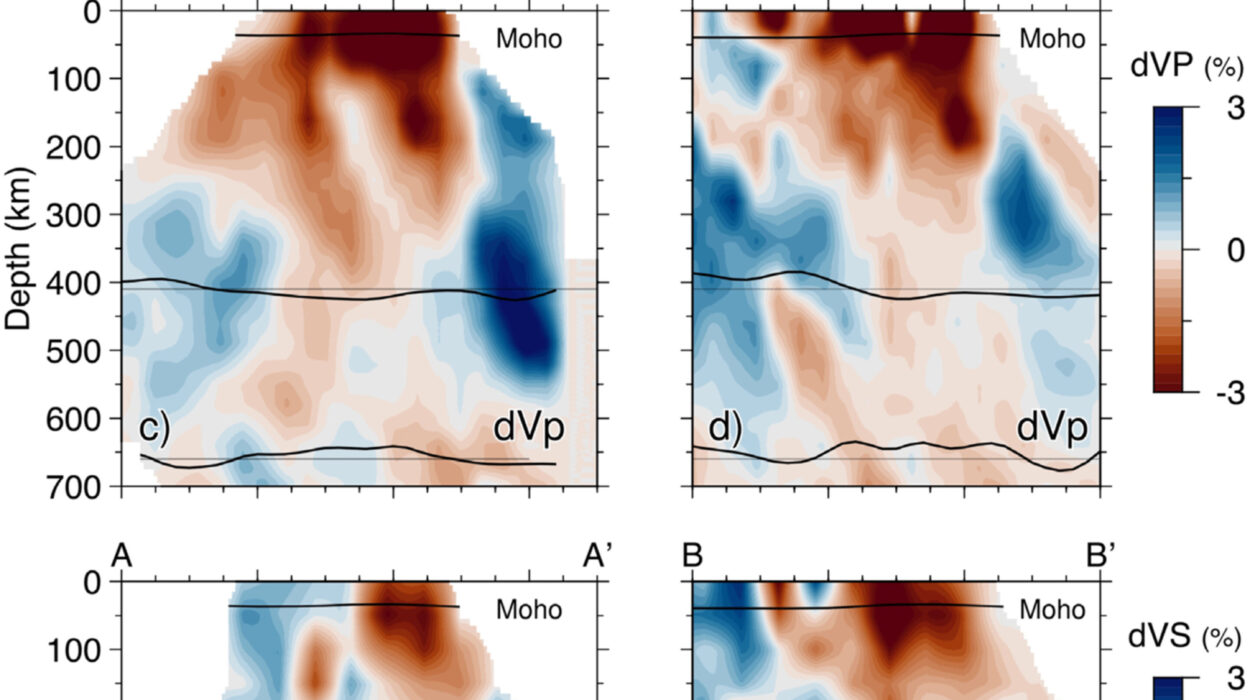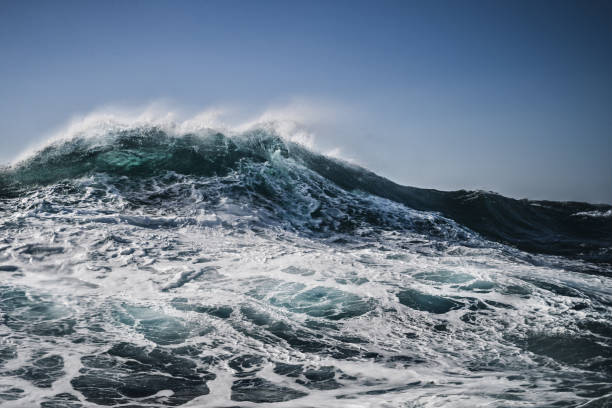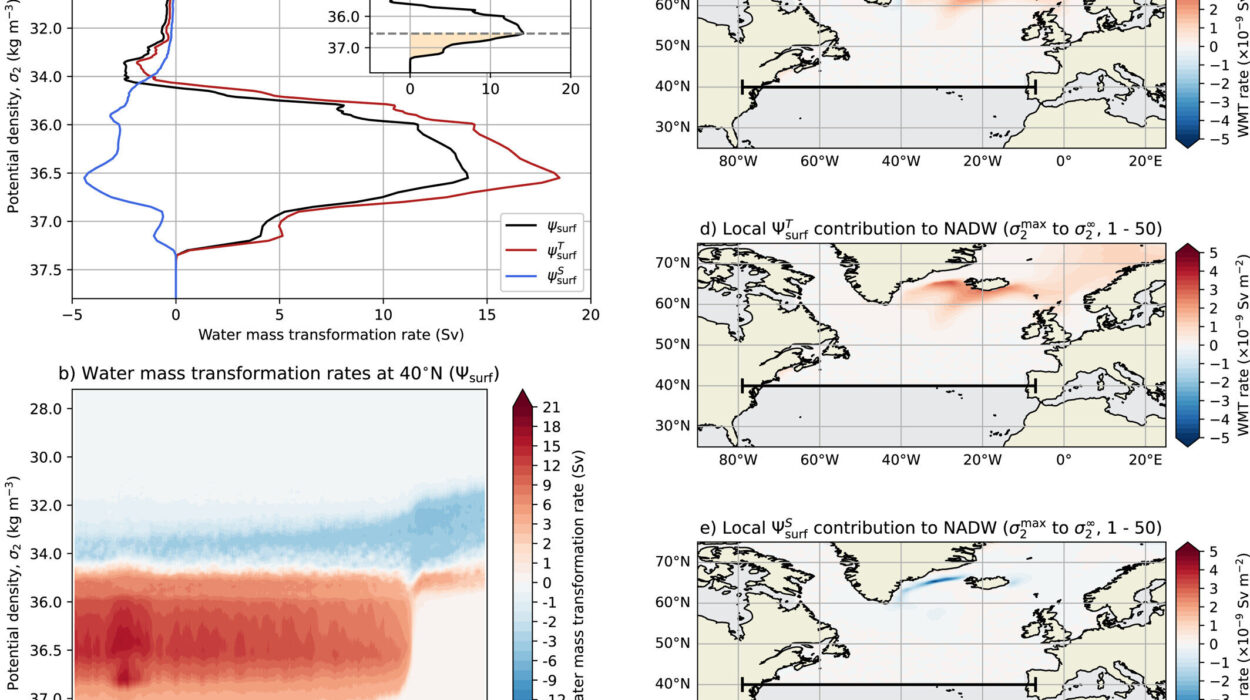Far to the south, beyond the reach of continents and crowded cities, lies the Southern Ocean—a vast ring of icy waters encircling Antarctica. To the casual observer, it might seem like a desolate expanse of gray waves and biting winds. Yet beneath its restless surface, the Southern Ocean performs one of the most important jobs on Earth. It breathes for the planet.
Every year, this ocean absorbs enormous amounts of carbon dioxide (CO₂) from the atmosphere—nearly 40% of all the CO₂ the world’s oceans collectively take in. Without it, global warming would be far more severe, climate extremes more frequent, and the delicate balance of life on Earth more unstable.
But as the climate warms and weather patterns shift, scientists have long feared that this vital oceanic carbon sink could weaken, unleashing more CO₂ back into the air. Climate models predicted it. Oceanographers expected it. And yet, it hasn’t happened—at least not yet.
A new study from researchers at the Alfred Wegener Institute (AWI) in Germany has shed light on this paradox, uncovering a hidden mechanism beneath the surface that has kept the Southern Ocean’s carbon-absorbing powers surprisingly strong.
When Predictions and Reality Diverge
For decades, climate models have suggested that as the planet warms, the powerful westerly winds circling Antarctica would intensify. These winds drive deep ocean currents that bring ancient, carbon-rich water up toward the surface—a process known as upwelling.
That upwelling is natural, but it comes with a tradeoff. The deeper waters that rise carry large stores of CO₂ accumulated over centuries. If too much of this CO₂-rich water reaches the surface, it could “crowd out” the ocean’s capacity to absorb new, human-made emissions from the atmosphere. In other words, stronger winds were expected to make the Southern Ocean less effective as a carbon sink.
And yet, when scientists examined decades of oceanic data, they found no sign of such a decline. Despite the strengthening winds and the changing climate, the Southern Ocean continues to absorb CO₂ at nearly the same rate as before.
The AWI team, led by oceanographer Dr. Léa Olivier, set out to find out why. What they discovered was a complex and delicate interplay of forces—one that’s both reassuring and alarming at the same time.
A Hidden Shield Beneath the Waves
Deep within the Southern Ocean, around 200 meters below the surface, lies a massive layer of salty, carbon-rich water. This deep water has not seen the light of day for hundreds, sometimes thousands, of years. It is dense, nutrient-rich, and relatively warm compared to the frigid surface above.
By contrast, the surface layer of the ocean is fresher, colder, and lighter. The difference in density between these two layers acts like a barrier—a stratified wall that prevents the deep, carbon-heavy waters from mixing upward.
Dr. Olivier and her team discovered that this barrier has grown stronger in recent decades, thanks to the “freshening” of the ocean’s surface. Melting glaciers, sea ice, and increased rainfall have poured more freshwater into the upper ocean, reducing its salinity. As a result, the contrast between surface and deep water has become sharper, reinforcing the separation between the two.
In simple terms: the Southern Ocean’s top layer has become a tighter lid, keeping carbon-rich waters trapped below and maintaining the ocean’s ability to absorb CO₂ from the air.
“Our study shows that the fresher surface water has temporarily offset the weakening of the carbon sink in the Southern Ocean,” Olivier explained. “It’s like the ocean has built a stronger gate to hold back the carbon that’s waiting beneath.”
Data from Decades of Exploration
To uncover this hidden process, the researchers analyzed nearly five decades of ocean data—spanning from 1972 to 2021—gathered from international marine expeditions across the Southern Ocean. They looked closely at water temperature, salinity, density, and CO₂ concentrations, comparing changes in both the surface and deep layers.
What emerged was a clear trend: since the 1990s, the salinity of the surface waters has steadily decreased while the deep waters have remained relatively unchanged. This growing contrast means less vertical mixing between the two, allowing the ocean to continue capturing CO₂ despite changing atmospheric and wind conditions.
However, this discovery comes with a warning. The very same processes that now help preserve the ocean’s carbon sink might not last forever.
The Tipping Point Beneath the Surface
While the surface freshening has temporarily stabilized the system, the deep waters are slowly rising. The study found that the upper boundary of these carbon-rich layers has moved about 40 meters closer to the surface since the 1990s.
As it rises, the boundary becomes more vulnerable to mixing—especially under the influence of strengthening westerly winds. This could eventually break the ocean’s fragile stratification, allowing ancient, CO₂-laden water to leak upward and escape into the atmosphere.
If that happens, the Southern Ocean could shift from being one of Earth’s greatest protectors to a new source of atmospheric carbon—a feedback loop that would accelerate global warming.
“It’s a delicate balance,” said Professor Alexander Haumann, co-author of the study. “If the layers begin to mix more deeply, more CO₂ could be released, and that would weaken one of our most crucial climate buffers.”
The Ocean’s Past and Future Intertwined
The deep water rising to the surface today contains carbon that entered the ocean long before the Industrial Revolution. It’s a silent reminder of how slowly the ocean’s internal systems move. What goes down into the depths may take centuries to return.
This time lag is both a blessing and a curse. On one hand, it means the ocean can store human-made carbon for generations. On the other, it means the full effects of what we emit today won’t be felt in the oceans for hundreds of years—locking in changes that future generations will inherit.
The AWI study suggests that we are now witnessing the early stages of a shift in this system. While the current stratification helps hold carbon below, it may also mask deeper changes waiting to unfold. If warming continues and winds grow stronger, the invisible wall separating surface and deep waters could eventually collapse.
When that happens, the ocean’s vast carbon reserves could begin to leak back into the air, amplifying global warming in a way humanity cannot easily reverse.
The Southern Ocean: A Climate Guardian Under Pressure
The Southern Ocean is not just another body of water. It is the heartbeat of Earth’s climate, driving global currents, regulating temperatures, and acting as a gatekeeper for carbon exchange between the atmosphere and the deep sea.
Every molecule of CO₂ that it absorbs buys humanity more time—time to reduce emissions, restore ecosystems, and adapt to a changing planet. But this resilience is not endless. The processes that stabilize the Southern Ocean are being reshaped by melting ice, shifting winds, and the relentless rise of global temperatures.
The AWI researchers warn that while the ocean’s carbon sink remains strong today, it could weaken dramatically in the future if these trends continue. That would mean more CO₂ lingering in the atmosphere, faster warming, and greater disruption to weather patterns, sea levels, and marine ecosystems.
Looking Deeper for Answers
Dr. Olivier and her colleagues emphasize the need for continued observation, especially during the harsh Antarctic winter, when the ocean layers mix most actively. “We need more data from the depths,” she says. “If we only look at the surface, we risk missing a crucial part of the story.”
To that end, the Alfred Wegener Institute and international partners are launching new projects such as the Antarctica InSync program, aimed at studying the ocean’s internal processes in unprecedented detail. By combining satellite data, robotic floats, and deep-sea sensors, scientists hope to understand not only how the ocean behaves now—but what it might do in the decades to come.
The Hidden Drama of the Deep
The Southern Ocean’s story is a powerful reminder that climate change is not only a matter of temperature or ice melt—it is also about invisible forces moving silently beneath the waves.
While we see the consequences of a warming planet in heatwaves, droughts, and rising seas, the ocean is fighting its own battle deep below the surface, holding back vast amounts of carbon that could reshape our world if released.
There is both hope and urgency in this discovery. Hope, because nature still possesses extraordinary self-regulating mechanisms; urgency, because those mechanisms are being tested as never before.
More information: Southern Ocean freshening stalls deep ocean CO2 release in a changing climate, Nature Climate Change (2025). DOI: 10.1038/s41558-025-02446-3. www.nature.com/articles/s41558-025-02446-3






